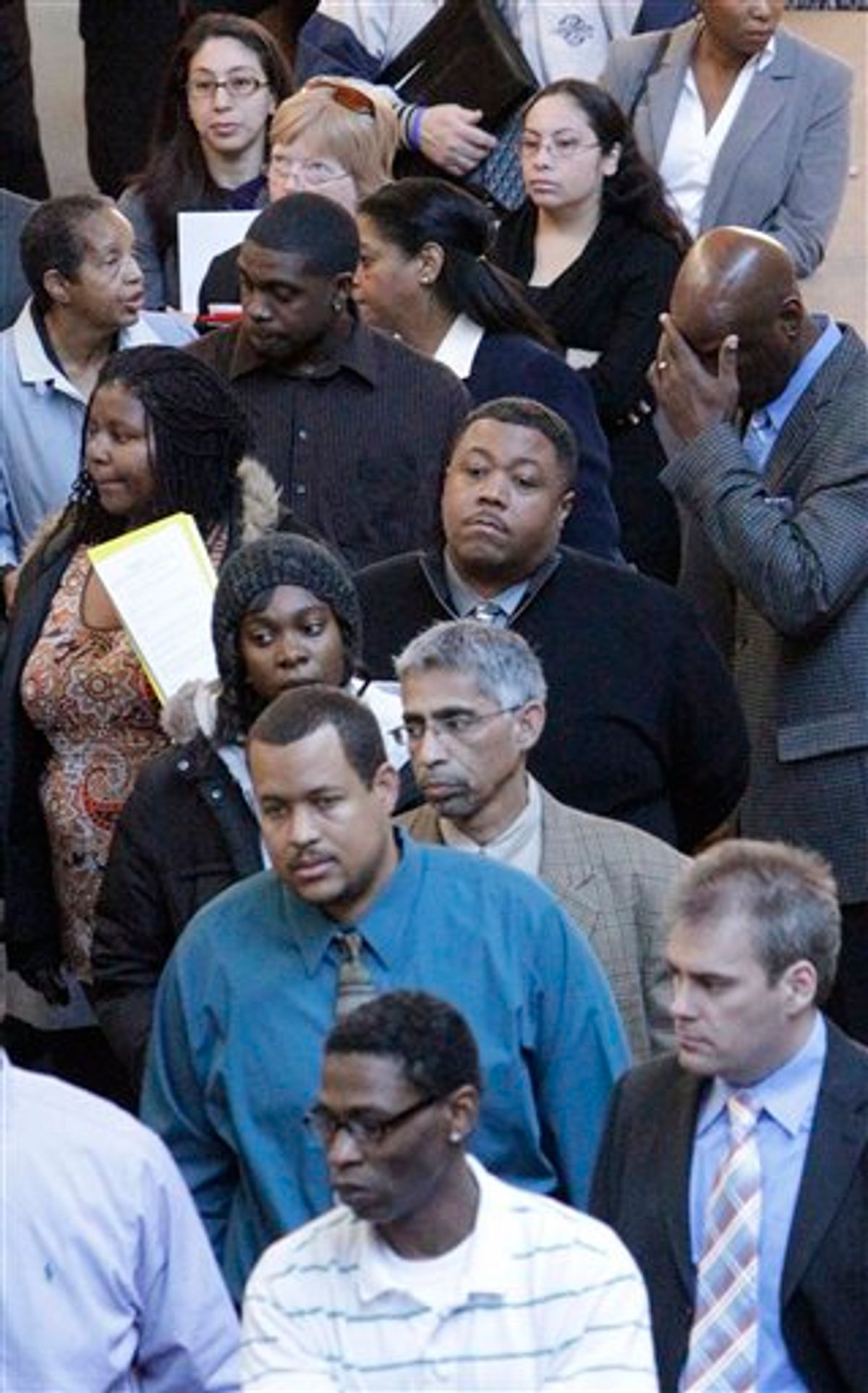Can you hear the sound of a thousand economist brows furrowing? The U.S. labor market continued to defy analysis on Friday. The Bureau of Labor Statistics reported that the U.S. economy added only 36,000 jobs in January, a figure far lower than the consensus expectation of economists (around 150,000), and a significant drop off from November and December's numbers.
But the real surprise was a stunning drop in the unemployment rate of four tenths of a percentage point, from 9.4 to 9.0. Economists had predicted the opposite -- a bump up to 9.5 percent.
To put that last number in perspective, prior to December's drop in unemployment from 9.8 to 9.4 percent, the unemployment rate in the U.S. had not dropped by as much as .4 percentage points in eleven years. But now it's happened in two consecutive months.
Normally, that would be considered great news, a sign of a surging economy. But when the unemployment rate falls while job growth is anemic, the usual explanation for the drop is that workers have simply given up looking for jobs. If, for example, your 99 weeks of unemployment benefits have finally run out, you are no longer counted as unemployed in the topline BLS number. According to the BLS, "the number of unemployed persons decreased by about 600,000 in January to 13.9 million, while the labor force was unchanged." That's not good.
Bloomberg News' coverage suggested that January's snowstorms may have affected the data, but the BLS usually indicates whether weather effects resulted in a serious distortion. There's also a possibility that new total U.S. population estimates by the government are confusing the situation. But after a month in which the available data on suggested, more than ever, that the U.S. economy had begun to grow quickly, the new jobs numbers are a huge disappointment. There are some scraps to feed on -- the "U-6 number," the broadest measure of unemployment delivered by the BLS, also fell sharply, from 16.7 percent to 16.1 percent, and the figures for November and December were revised up, but the only number that really counts for now is 36,000 -- far too low to meaningfully change the dismal job U.S. market, and a stark reminder that the U.S. economy is still a long way from a real recovery.
UPDATE: At The New York Times, economics beat reports Floyd Norris and David Leonhardt are engaging in an amazing realtime dialogue/analysis on the labor report numbers. (Amazing, because I have no idea how they found the time to write so much and simultaneously absorb the data.) A key observation: The significant downward adjujstment to the Census Department's estimate of U.S. population totals are applied to the January employment rate, but not last year's figures. So the unemployment rate may have been artificially too high over the last year or more, which helps to explain at least part of its sharp decline now.
LATER UPDATE: The consensus opinion seems to be that this an especially "messy" labor report that confuses more than it clarifies, but if you'd like a positive spin on the numbers, try Stephen Gandel's take at Time.



Shares